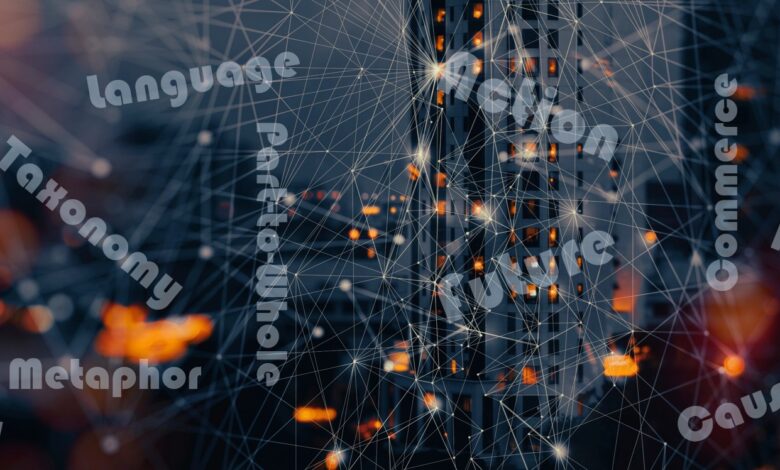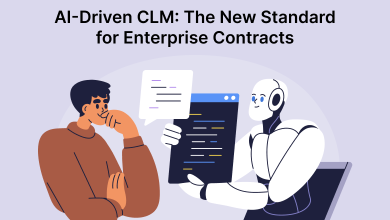
Is Generative Artificial Intelligence (GenAI) a panacea? Can AI become a machine of loving grace? Back in the late 1980s AI practitioners were primarily working with inference systems and model-based decision support systems, and doing basic research in neural networks. Two important conferences in 1988 covered radically different AI approaches:
- The Conference on Neural Information Processing Systems focused on Neural Networks or artificial neural systems (ANS), the core of modern GenAI systems; and
- The Second Conference on Applied Natural Language Processing focused (though not exclusively) on non-ANS AI approaches that have come to be classified as “Cognitive AI”.
A third of a century later Generative AI has captured the attention of the world with amazing results creatively generating content and answers far beyond the capabilities of prior systems. Expert systems and rule engines that were once at the leading edge of AI have become commonplace and some consider them to be less than AI. They don’t learn as well, they are clunky and less intelligent than Claud, ChatGPT, DeepSeek, Llama and others. Is the definition of AI evolving? Can digital systems exhibit intelligence or should we think of systems on a spectrum of intelligence or their capabilities on separate spectra? Is there a place in this milieu for AIs that do not rely on neural networks with deep learning?
Implicit Patterns vs. Explicit Knowledge
Typical ANS-based AIs learn patterns through repeated exposure. Biological brains do that: no infant, human or otherwise, can recognize a thing and name it on first sight. Mature creatures can often infer things about a newly encountered object, but only by fitting it with known patterns that were learned through repeated exposure. The inferences may be proven correct or not through further observation. This is a strong argument for patterns being the core of cognition.
But something happens to a pattern when we give it a name. The combination of naming objects and their parts, and observing their behaviors moves knowledge from implicit recognition to explicit knowledge that serves as a basis for complex reasoning. The evolution from pattern knowledge to functional, actionable knowledge may be gradual. But knowing about causes and effects and the mechanical capabilities associated with things enables us to go beyond the two- or three-dimensional patterns we perceive with our senses. It enables us to go beyond the present to predict the future and infer the past.
Because we give names to abstract things and phenomena, the symbolism of the name can help us reduce the abstract association to symbolic patterns. Thus an implicit pattern-based technology can appear to understand arbitrarily complex phenomena and associations, even when it does not. Because neural networks are pattern-based, they cannot truly understand metaphor, poetry, bias or deception unless explicitly trained on a case-by-case basis. The expression “She hit it out of the park” which, depending on context may apply to baseball or any success, is very easy for humans to understand, but completely opaque to GPTs not explicitly trained to understand it.
Explicit knowledge systems, too, require training. But Decision support systems and natural language understanding systems that have algorithmic or heuristic learning and reasoning capabilities about taxonomy and meronomy with inheritance, causality, temporal and spatial constraints can infer a broader range of associations than pattern-based systems. Answers to “why” and “how” questions are often handled more effectively by Cognitive AIs than GenAIs because of the explicit knowledge and algorithmic approach.
Neuromorphic Computing – Imitating Biological Brains
While Neural networks do a marvelous job of simulating the perception centers of the brain with their directional flow and weighted connections, they are not as neuromorphic as meets the eye. By the time of the 1988 NIPS (now NeurIPS) conference, prior ideas about the implicit structure of knowledge in the brain were being replaced by an understanding that the brain stores information explicitly. We still do not know exactly how knowledge is stored in biological neural networks. But we do know that the implicit storage model of Large Language Models (LLMs) is not very much like the complex reasoning centers of the brain.
James Slagle, my graduate advisor at the University of Minnesota told me that explicit or implicit, AI practitioners begin with a knowledge representation (KR) scheme. The KR scheme exposes the knowledge to processes that can achieve a task such as question answering, decision support or natural language understanding. KR schemes are more neuromorphic if they are distributed or massively distributed, explicit and associative. Associationism was described by Aristotle in ancient Greece and can be exhibited in explicit knowledge graphs.
Roger Schank in the 1970s and John Sowa in the 1980s ushered in a blossoming science in knowledge graphs. In parallel, ontologists including Tim Berners-Lee and Doug Lenat using OWL/RDF and DAML+OIL developed outstanding ways to classify knowledge to support automated processes. Knowledge graphs appealed to me from those early days, and still serve as powerful KR for tasks that benefit from explicit knowledge: tasks such as understanding intent as articulated in language, resolving language ambiguity, and answering complex questions with actionable knowledge. Not every knowledge graph is an ontology and not every ontology is a knowledge graph. But the intersection can produce amazing results.
| LLMs | Graph databases |
| An LLM stack includes an input layer with tokenized raw text, an embedding layer to translate tokens into dense vector form, and a number of transformer layers, each with a multi-head self-attention mechanism, a feed-forward neural network, and residual connections for layer normalization. | A knowledge graph has Nodes that explicitly represent individual entities. A node can store different types of data. An edge represents a relationship between any two connected nodes in a graph. Properties store information about nodes and edges, enhancing the model’s richness. |
Explicit storage of knowledge permits total transparency and explainability, and advanced models have massive potential. Where LLMs do patterns, graphs can be used to understand intent and can eventually support some capabilities better than LLMs as we know them.
Apperceptive Learning
Training neural networks can be onerous and demands expensive Graphics Processing Units (GPUs). In one recent example, training LLaMA 3.1 (405B) took 70 days on 16,000 GPUs. Once the model is trained, new knowledge cannot be added, thus periodic retraining is needed. Each new training begins with a tabula rasa or blank slate. Distributed LLMs such as DeepSeek can dramatically reduce the computational costs, but as many of them rely on prior LLMs for training, the real savings are difficult to calculate.
Cognitive AI approaches can use continuous apperceptive learning. Apperceptive learning is cumulative and the knowledge graph grows as new knowledge is added. There are weighted knowledge graph models in which the knowledge in the graph is assigned confidence values that can be used for fuzzy reasoning replicating one of the greatest strengths of LLMs.
There are some approaches to knowledge graph management that, besides adding new knowledge, can adjust the weights or confidence values and tags of existing knowledge, therefore preserving the older misconceptions and marking them so that they can be understood to be superseded knowledge. Some knowledge graph models permit deletion of individual concepts if later found to be false. In many cases supervised learning or human curation is required before making such drastic changes to accumulated knowledge. In these models, after the first batch of knowledge is acquired each new learning episode begins with a tabula conferta packed with facts, ideas and experiences upon which to build.
How does graph training differ from LLM training? Cognitive AI systems can learn and adapt in real-time, assimilating new information and evolving understanding over time through deep language understanding. When an AI truly understands what it reads, it typically only has to read it once to identify concepts not yet learned and can add them to the graph. As new knowledge nodes are stored in a graph, they must be associated by edge connections with existing nodes as graphs do not favor orphans (dissociated nodes). These associations may be taxonomical for things, causal for actions, geographical for places, episodic for events and so on.
Deep knowledge, deep understanding and accretive learning benefit from advanced classification strategies that separate both knowledge domains (such as banking, aerospace, marine biology…) and association types. Each different knowledge type may have its own KR scheme. Semantic knowledge of concepts and ideas and episodic knowledge of events and interactions may also be separated. But a single KR scheme for all knowledge is also possible as long as it accounts for the variability in domains and association types.
The appeal of Cognitive AI with apperceptive learning is that it can more closely approximate human reasoning, resolving ambiguity in the complex symbol system that is language, and determining intent more accurately. The specific model I have been designing and developing since the afore-mentioned conferences also has the promise of resolving metaphors and multiple meanings, identifying and flagging bias and deception, and serving as a basis for high-quality, multi-directional translation.
Limits of Patterns
Witnessing the rapid improvements in GenAI capabilities, it is hard to imagine any cognitive activity they will not eventually be able to perform with convincing authority. But at what computational and environmental cost? Many of the best results from GenAIs have been achieved when LLMs are augmented with prompt engines, semantic kernels or LangChain, Retrieval Augmented Generation and separate vector stores.
Recent add-ons have reduced the inherent opacity of the feed-forward neural networks in the hidden transformation layers of GPTs by providing source references to point to the general sources of answers. Some wrap explicit knowledge systems around LLMs. Some use pre-processor and post-processors based on LLMs to bring the capabilities closer to human cognition and closer to autonomous Artificial General Intelligence (AGI).
GenAI excels at creating new, original content, which I expect will always be in demand. Cognitive AI focuses on simulating human thought processes to solve complex problems and has the potential to leap-frog GenAI in language understanding, complex question answering and human language translation. Use cases for language understanding include business and personal capabilities. Businesses have an increasing variety and volume of information arriving at increasing velocity. Cognitive AI can help tame this beast.
Some common domains of AI include:
| Prediction | In many cases Cognitive AI with causal reasoning will outperform GenAI |
| Communication | Explicit intent models for dialog can leap-frog implicit understanding models |
| Discovery | The ability to understand documents on first read will be a game-changer |
Individuals have been voracious consumers of AI for question answering and even companion apps that, through dialog, help people learn, discover interests they didn’t know they had and even overcome loneliness. Trustworthy Cognitive AI introduces the promise of meeting people’s needs at a fraction of the computational and environmental cost.
Keep your eyes and your mind open for Cognitive AIs that outperform GenAI in language understanding, question answering, complex reasoning and machine translation. GenAI will continue to be important, but it will become a specialized tool rather than the universal Jack of all brain tasks some see it as today.




